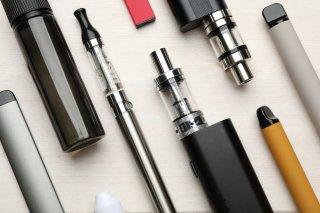Secondhand Electronic-Cigarette Aerosol and Indoor Air Quality
On this page:
- What is Secondhand Electronic-Cigarette Aerosol?
- What are the Health Effects of Secondhand E-Cigarette Aerosol?
- What Can I Do to Reduce Exposure to Secondhand E-Cigarette Aerosol?
Related pages:
- Secondhand Smoke and Electronic-Cigarette Aerosols
- Secondhand Tobacco Smoke and Indoor Air Quality
- Secondhand Marijuana Smoke and Indoor Air Quality
- Secondhand Smoke and Electronic-Cigarette Aerosol Resources

What is Secondhand Electronic-Cigarette Aerosol?
Aerosols are a mix of tiny particles and/or droplets in the air. Electronic cigarettes produce an aerosol by heating a liquid that usually contains nicotine, flavorings and other chemicals.
E-cigarette users inhale this aerosol into their lungs. Bystanders can also breathe in this aerosol when the user exhales into the air.
These aerosols can contain potentially harmful substances — including nicotine, formaldehyde and metals — some of which cause cancer and other harmful health effects.
The amount, quantity and toxicity of substances that e-cigarettes release depend on several factors, such as the type of device, how the device operates and is used, and the e-liquid used.
Learn more about e-cigarette aerosol from the Centers for Disease Control and Prevention.
What are the Health Effects of Secondhand E-Cigarette Aerosol?
Research indicates that e-cigarettes may emit harmful substances, which means there could be health risks to the user and others through secondhand exposure.
Some of the harmful substances emitted in secondhand e-cigarette aerosols are the same as those in secondhand tobacco smoke. However, more research is needed to fully understand emissions from e-cigarettes and their impact on human health.
What Can I Do to Reduce Exposure to Secondhand E-Cigarette Aerosol?
Prohibiting e-cigarette use inside or near buildings, vehicles and other enclosed spaces is the only way to eliminate exposure to secondhand e-cigarette aerosol and health risks that may come with it.
Ventilation, filtration and air cleaning techniques may reduce harmful substances released from e-cigarette use indoors but are not likely to eliminate them.
If you want to quit, resources are available.
